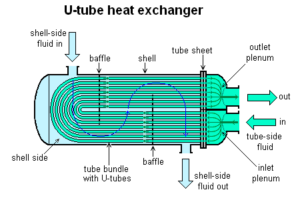Industrial vacuums are critical tools in manufacturing plants, food production, and large buildings and facilities. These machines may require specific accessories to get the job done right for various applications, and choosing the right vacuum filter not only ensures effective debris capture but also helps maintain airflow, extend machine life, and keep operators safe from hazardous dusts or vapors.
This guide breaks down the core types of industrial vacuum filters, their filter media, cleaning methods, performance, and ideal applications.
Common Industrial Vacuum Filter Types:
- Disposable Filter Bags
- Filter Material: Paper
- Cleaning: Not cleanable; discard when full
- Lifespan: Single use
- Best For: Light debris and basic pre-filtration needs
- Efficiency: ~90%
- Surface Area: Low
Disposable filter bags are best suited for collecting light, non-hazardous debris in less demanding environments. They’re commonly used to clean up materials like sawdust in woodworking shops, paper scraps and cardboard dust in packaging areas, and light drywall or plaster dust during minor renovations. They’re also suitable for general office or warehouse dust and dirt where high-efficiency filtration isn’t required. Ideal for light-duty or temporary applications, they offer limited filtration and need frequent replacement.
- Cloth Filters
- Filter Material: Polyester
- Cleaning: Manually remove and shake or wash
- Lifespan: Up to 1 year or as needed
- Best For: General dry material collection
- Efficiency: ~95%
- Surface Area: Medium
Cloth filters are a reusable option ideal for general dry material collection. They’re frequently used in environments such as machine shops to collect metal shavings, in food production areas for capturing flour or grain dust, and in manufacturing spaces to pick up sand, insulation particles, or general dirt. Textile facilities also rely on cloth filters to manage lint and fibers released during fabric processing.Cloth filters strike a balance between reusability and performance, offering solid filtration for most routine plant maintenance tasks.
- Wet Filters (Oil and Coolant Collection)
- Filter Material: Polypropylene
- Cleaning: Manual rinse
- Lifespan: Varies by application
- Best For: Liquid recovery, including oils and coolants
- Efficiency: Not applicable
- Surface Area: Low
Wet filters are specifically designed to handle liquids and protect the vacuum motor during recovery. They are often used to collect spent machine oils and hydraulic fluids in CNC and maintenance shops, as well as coolants used during industrial cutting or grinding operations. These filters also help manage sludge and slurries from industrial floor scrubbers, wastewater from cleaning processes, and grease trap waste in food manufacturing. Used in vacuums designed to collect liquids, wet filters often pair with float shutoffs to protect motors from damage during fluid pick-up.
- Pleated Cartridge Filters
Pleated cartridge filters are highly efficient and commonly found in vacuums used for fine dust collection in compact spaces. These filters are ideal for capturing fine sanding dust in woodworking or auto body shops, silica dust from concrete grinding, and powdered chemicals like talc in manufacturing. They’re also used for toner dust in print operations and fine weld fume particles in fabrication shops.
- Filter Materials:
- Standard Polyester
- Anti-Static (Conductive)
- Flame-resistant fabrics
- PTFE-Coated
- Cleaning: Reverse pulse air
- Lifespan: Replace frequently
- Best For: Fine dust, compact systems
- Efficiency: Up to 99%
- Surface Area: Medium
Cartridge filters deliver fine particle filtration in smaller vacuum units. Media types allow customization for static dissipation, heat resistance, and chemical environments.
- Pleated Filters with External Shakers
- Filter Materials: Same as cartridge filters
- Cleaning: External shaker system (when vacuum is off), washable
- Lifespan: Several years with proper care
- Best For: High-dust environments, continuous operation
- Efficiency: Up to 99.9% at 1 micron
- Surface Area: Very High
These filters are engineered for long run times and easy cleaning. Ideal for facilities dealing with large volumes of dust or long shift operations.
- HEPA Filters
- Filter Material: HEPA media
- Cleaning: Not cleanable
- Lifespan: Oversized for extended use
- Best For: Respirable and hazardous dusts
- Efficiency: 99.97% at 0.3 microns
- Surface Area: Oversized per vacuum CFM
HEPA filters are used as secondary stages for fine particulate capture and are essential for meeting OSHA/EPA standards in hazardous material cleanup.
- ULPA Filters
- Filter Material: ULPA media
- Cleaning: Not cleanable
- Lifespan: Oversized for extended use
- Best For: Cleanrooms, pharmaceutical and sterile environments
- Efficiency: 99.99% at 0.12 microns
- Surface Area: Oversized per vacuum CFM
Even more efficient than HEPA, ULPA filters are specified in ultra-sensitive environments where contamination control is critical.
- Carbon Bed Filters
- Filter Material: Activated Carbon
- Cleaning: Not applicable
- Lifespan: Oversized for extended use
- Best For: Vapor, odor, and gas phase filtration
- Efficiency: Not particle-based
- Surface Area: Oversized per vacuum CFM
These filters target airborne vapors and odors rather than particulates. Ideal for chemical processing, clean-up of VOCs (volatile organic compaounds), or odor control.
Media Options for Pleated and Cartridge Filters
| Media Type | Performance Features | Application |
| Standard Polyester | General purpose dust collection | Basic plant and facility maintenance |
| Anti-Static (Conductive) | NFPA-compliant static dissipation | Combustible dust: sugar, grain, flour |
| Flame resistant Materials | High-temp resistance (~400°F) | Ovens, dryers, baking facilities |
| PTFE-Coated | Chemical/moisture resistance, non-stick surface | Sticky powders, pharmaceutical dusts |
Choosing the right filter media based on your operational needs can reduce filter changes, improve safety, and extend vacuum life.
Key Takeaways for Performance and Maintenance
- Surface Area Matters: Pleated filters offer more usable surface area, improving airflow and reducing clogging.
- Layered Filtration Works Best: Use high-efficiency primary filters before HEPA or ULPA filters to protect them from premature failure.
- Clean or Replace Filters Regularly: Clean cartridge filters using vacuuming, low-pressure compressed air (outside only), or washing when applicable.
- Stay Compliant: Use anti-static filter media when collecting combustible dust to meet NFPA 660 standards.
Proper filter selection and maintenance are crucial for keeping your industrial vacuum systems running at peak performance. Whether you’re collecting fine dust in a factory or handling sensitive pharmaceutical materials, choosing the right filter can make all the difference in safety, efficiency, and long-term cost savings.
Need help finding the right vacuum system and filters for your facility? Contact a vacuum specialist to get expert advice based on your specific application.
Whether you require installation, repair, or maintenance, our technicians will assist you with top-quality service at any time of the day or night. Take comfort in knowing your indoor air quality is the best it can be with MOE heating & cooling services Ontario's solution for heating, air conditioning, and ventilation that’s cooler than the rest.
Contact us to schedule a visit. Our qualified team of technicians, are always ready to help you and guide you for heating and cooling issues. Weather you want to replace an old furnace or install a brand new air conditioner, we are here to help you. Our main office is at Kitchener but we can service most of Ontario's cities
Source link


